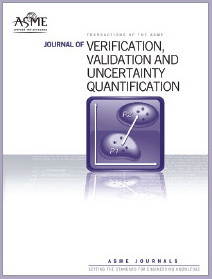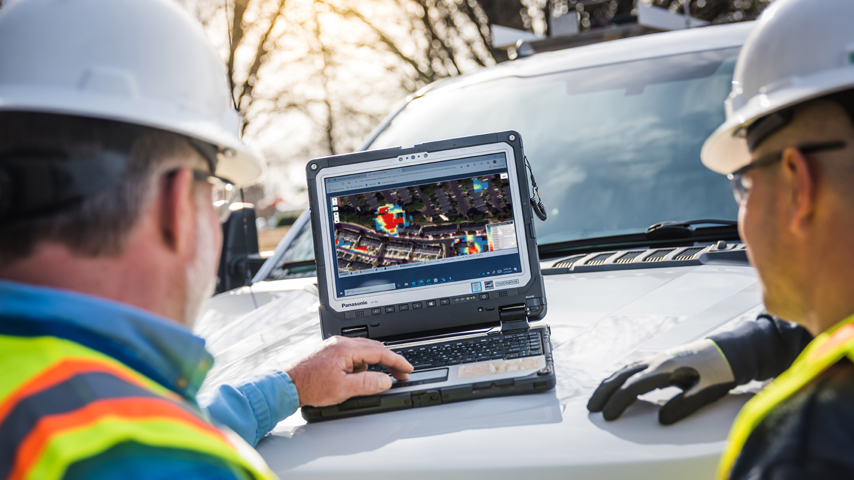Papers Sought for Verification, Validation and Uncertainty Quantification Journal
Papers Sought for Verification, Validation and Uncertainty Quantification Journal
Sept. 8, 2017

The ASME Journal of Verification, Validation and Uncertainty Quantification (JVVUQ) is currently accepting papers for publication later this year and in future issues of the journal.
The quarterly journal, which serves an audience of both engineers and scientists, disseminates original and applied research, illustrative examples, and high-quality validation experimental data applied to the design of experiments, computational models, and the analysis of experimental results. Authors who are interested in submitting a manuscript for the journal, which launched in 2016, can get an idea of the range and flavor of the journal by reviewing the following examples of previously published papers:
“Teaching a Verification and Validation Course Using Simulations and Experiments with Paper Helicopters” (by C. Park, J-H. Choi and R. T. Haftka, Sept. 2016, Vol. 1, Issue 3) describes a class project intended to acquaint students with the inherent aleatory uncertainty when experiments are used to validate scientific simulation models. The students build small paper helicopters, test them, and then compare the results to two different models of the drag produced by the autorotation that slows their fall. The paper provides details of how the experiments were conducted and analyzed. In addition, actual data from the experiments are provided.
“Experimental Validation Benchmark Data for Computational Fluid Dynamics of Mixed Convection on a Vertical Flat Plate” (by B. W. Lance, J. R. Harris and B. L. Smith, June 2016, Vol. 1, Issue 2), is representative of the high-quality validation data published in the journal. The paper describes an experimental study of mixed convection over a vertical, flat, heated wall that was explicitly designed to obtain validation data with a high level of completeness for both buoyancy-aided and buoyancy-opposed turbulent flows. Measured system responses included mean and fluctuating velocity profiles, temperature profiles, wall heat flux, and wall shear stress. All of these data are described in detail and provided in tabulated format.
“Uncertainty Quantification in a Patient-Specific One-Dimensional Arterial Network Model: EnKF-Based Inflow Estimator” (by A. Arnold, C. Battista, D. Bia, Y. Z. German, R. L. Armentano, H. Tran and M. S. Olufsen, March 2017, Vol. 2, Issue 1) discusses the application of validation and uncertainty quantification in patient-specific models of cardiovascular dynamics in the presence of input uncertainties. The paper describes how uncertainty in the flow profile applied at the inlet boundary of a 1D model affects area and pressure predictions at the center of a single vessel. The model predictions are compared to ex vivo area and blood pressure measurements in the ascending aorta, the carotid artery, and the femoral artery of a healthy male Merino sheep.
In contrast to the preceding examples that focus on validation, the paper “The Escape of High Explosive Products: An Exact-Solution Problem for Verification of Hydrodynamics Codes” (by S. W. Doebling, Dec. 2016, Vol. 1, Issue 4) is specifically aimed at verification. It describes the escape of high explosive (HE) products problem and demonstrates the use of the problem for code verification assessment. The problem tests the implementation and numerical behavior of a high explosive detonation and energy release model and its interaction with an associated compressible hydrodynamics simulation code. By a judicious selection of the material specific heat ratio, the problem has an exact solution with linear characteristics, enabling code verification of a Lagrangian hydrodynamics code.
Ashley F. Emery, Ph.D., adjunct professor of architecture and industrial & systems engineering at the University of Washington, is the editor for the journal. The journal also has a number of distinguished associate editors. Visit the JVVUQ page on the ASME Journal Tool for the complete list of associate editors.
All paper submissions should be prepared in accordance with ASME Author Guidelines. To submit a paper, visit ASME’s journal submission site, http://journaltool.asme.org, and click “Verification, Validation and Uncertainty Quantification” on the navigation bar on the left side of the page.
For more information on the ASME Journal of Verification, Validation and Uncertainty Quantification, visit https://journaltool.asme.org/home/JournalDescriptions.cfm?JournalID=29 or contact Ashley Emery by e-mail at emery@u.washington.edu. For more information on the ASME Journal Program, visit the ASME Digital Collection at http://asmedigitalcollection.asme.org/journals.aspx.




